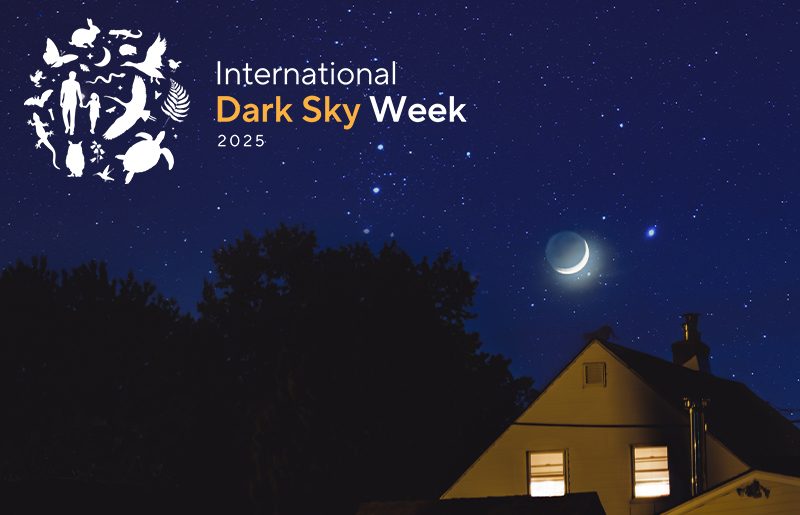
International Dark Sky Week 2025: How Houstonians Can Help Fight Light Pollution and Reclaim the Night Sky
As cities around the globe prepare to dim their lights and turn their eyes to the stars, residents across the Greater Houston area are invited to join the worldwide celebration of International Dark Sky Week, taking place April 21–28, 2025. Organized by DarkSky International, the event aims to raise awareness about the importance of natural night and the growing issue of light pollution, particularly in urban environments like Houston.
At its core, International Dark Sky Week is a reminder that darkness is not something to fear, but to embrace. From improving human health and protecting wildlife habitats to preserving cultural traditions and enhancing scientific discovery, the night plays a vital role in life on Earth.
Light Pollution in Houston: A Growing Challenge
With more than 7 million residents, Houston is one of the most light-polluted cities in the United States. According to satellite data, much of the metropolitan area—particularly inside Beltway 8 and along corridors like I-10 and US-59—suffers from intense skyglow, making it difficult to see the stars. In some parts of central Houston, only a few dozen stars are visible to the naked eye, compared to thousands in darker, rural skies.
This urban glow is fueled by a mix of streetlights, highway lighting, commercial signs, and residential floodlights, all of which contribute to glare and light trespass. The cumulative effects not only obscure our view of the Milky Way but also impact wildlife, human health, and even safety.
Mobile Sidebar Ad
The Consequences: Wildlife and Human Health at Risk
Artificial light at night interferes with natural circadian rhythms, leading to reduced melatonin production and potential long-term health risks, including sleep disorders, obesity, and mood disturbances. In wildlife, the disruption is even more pronounced. Migratory birds, which travel through Houston on key flyways, often become disoriented by city lights, leading to building collisions. Local organizations like Houston Audubon support campaigns like "Lights Out Texas"to encourage light reduction during migration seasons.
Elsewhere, excessive lighting disrupts mating and feeding behaviors in many species, and contributes to the broader issue of declining biodiversity.
How Houston Residents Can Participate in Dark Sky Week
There are several ways individuals and communities in Houston can get involved in International Dark Sky Week:
Visit Brazos Bend State Park
Just 50 miles southwest of the city, Brazos Bend State Park is one of the few relatively dark-sky areas near Houston. On Saturday, April 26, visitors can attend a special daylight stargazing program to observe the sun using telescopes and learn about our closest star. More information can be found on the Texas Parks & Wildlife website.
For those looking to explore the night sky, Brazos Bend State Park is also home to the George Observatory, where visitors can stargaze using some of the largest public telescopes in the United States. Operated by the Houston Museum of Natural Science, the observatory offers Saturday night public viewings where guests can glimpse planets, star clusters, and distant galaxies. Learn more and get tickets in advance here.
Stargaze with the Houston Astronomical Society in Cypress
Join Harris County Precinct 4 and the Houston Astronomical Society for an evening of stargazing at John Paul Landing Environmental Education Center on Saturday, April 26, 2025, from 8:00 PM to 10:30 PM, featuring a brief indoor presentation and telescope viewing under the night sky. Space is limited; register here.
Conduct a Home Lighting Assessment
DarkSky International encourages residents to assess their outdoor lighting to ensure it meets responsible design principles. Shielded, downward-facing fixtures, motion sensors, and warm color temperatures (under 3000K) can drastically reduce your home's light footprint.
Contribute to Citizen Science with Globe at Night
Take part in the Globe at Night project, an international effort to track light pollution. Participants measure night sky brightness from their backyard and submit data to a global database, helping scientists better understand the impact of artificial lighting.
Celebrate with Friends and Family
Whether it’s a backyard star party, a night hike, or simply turning off the lights and enjoying the stars, International Dark Sky Week is best shared. Don’t forget to tag your photos with #DarkSkyWeek and #DarkSky to inspire others.
Mobile Sidebar Ad
A Call to Action for Houston’s Future
While Houston does not currently have a citywide light pollution ordinance, some local measures are beginning to address the issue. Notably, the City of Houston’s Residential Buffering Ordinance, amended in 2023, introduces targeted regulations aimed at limiting light trespass from commercial developments near residential properties. These standards require shielded outdoor and garage lighting fixtures, establish buffer zones, and set limits on how light is emitted from mid-rise and high-rise buildings adjacent to single-family or small multi-family homes.
Though these changes represent incremental progress, greater awareness and broader policy efforts are needed to significantly reduce urban skyglow and preserve Houston’s remaining views of the night sky—goals that are central to International Dark Sky Week. Local groups such as the Houston Astronomical Society and DarkSky International are working to promote education and smarter lighting practices. Community-driven change can begin with something as simple as replacing a porch light or advocating for improved municipal lighting policies.
“Look up into the night sky. How many stars can you see?” asks DarkSky’s public campaign. For most Houstonians, the answer is far fewer than there should be—but small changes today can preserve the night skies of tomorrow.
 Tiffany Krenek has been on the My Neighborhood News team since August 2021. She is passionate about curating and sharing content that enriches the lives of our readers in a personal, meaningful way. A loving mother and wife, Tiffany and her family live in the West Houston/Cypress region.
Tiffany Krenek has been on the My Neighborhood News team since August 2021. She is passionate about curating and sharing content that enriches the lives of our readers in a personal, meaningful way. A loving mother and wife, Tiffany and her family live in the West Houston/Cypress region.





